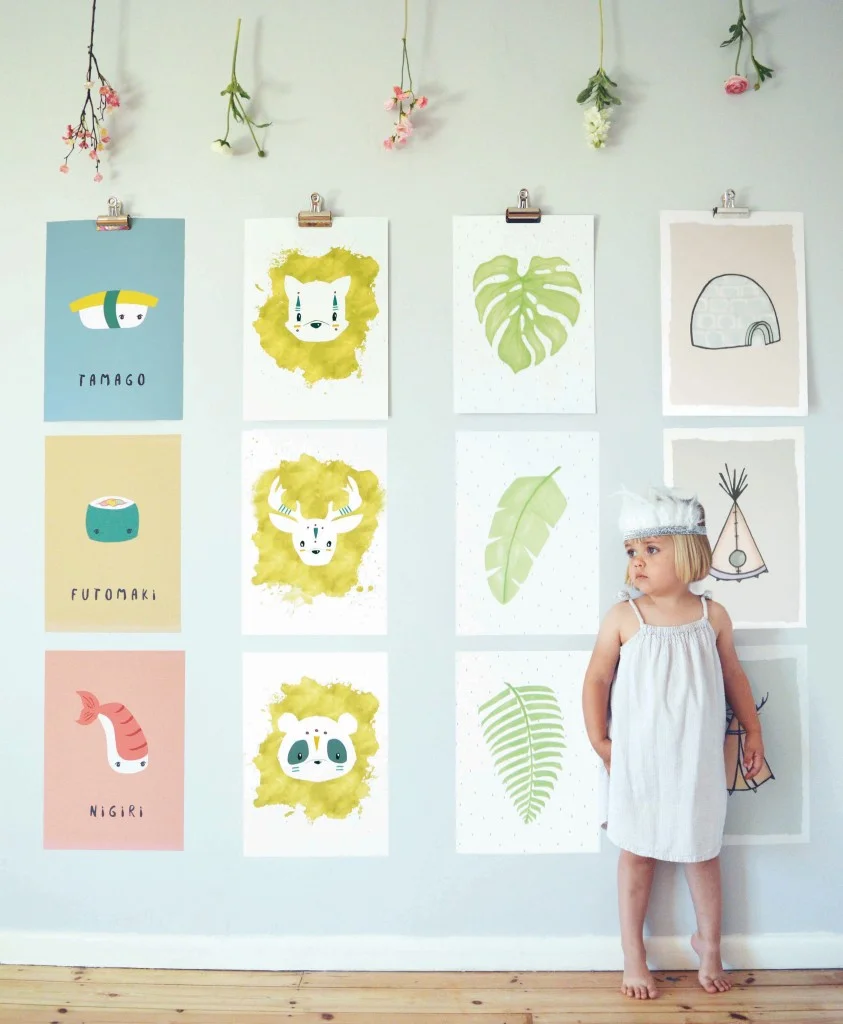Why Design Matters Even for Children
Rose Lihou is the founder of Born Lucky, a fresh brand creating nursery led artwork. I love her style- its contemporary without being cold and celebrates childhood without being childish. Here is my interview with her:
You’re a designer with an interest in design for children. How did this interest develop in your career?
My interest in design for children developed via parenthood. I was moved by the way in which good, well-intentioned design enriched the daily experience for my children, and so began to explore this in my work.
How did the name ‘Born Lucky’ come about?
Born Lucky is the result of a collaboration with a talented brand creative. I love the name. For me, it’s a quiet recognition of gratitude and aspiration.
I love the phrase on your website “We believe that a child's bedroom wall space is a privileged position to occupy. It's the first and last thing they see each day. We believe that the artworks on their wall should be purposeful and inspire creativity.” I’d love to hear how this idea developed into Born Lucky.
Thank you. I remember so clearly the things on my bedroom wall when I was a child – I think it’s such an evocative thing to ask people to recall. I wondered about the way these images and themes and colours that we looked at each day, during our most formative years, could remain in our subconscious. It occurred to me what a privileged space the bedroom wall is, and what if we used this space to display artwork designed to nurture imagination.
I use childhood iconography to explore narratives of adventure and community, and use a colour palette drawn from nature, with hues of putty, ice and leaves. This results in designs which are tranquil and easy on the eye, creating a sense of calm and peacefulness.
What do you think children respond to in terms of design?
Generally speaking, children tend to have a short attention span and a strong initial reaction. I think children respond to design which is simple, engaging and often character-driven.
I read one of your instagram posts where you mentioned that ‘gender neutral’ is important to you- can you tell us more?
It’s important to me that Born Lucky designs are gender neutral and will work in rooms for boys, girls and sharing siblings. I often find that nursery décor is heavily gendered, which can be unhelpful in terms of perpetuating stereotypes. Of course, there’s nothing wrong when a child chooses a typical design for their gender- but I do welcome designs which are simply for children rather than boys or girls.
You only launched in July but business already seems to be going well. How’s the journey been for you?
It’s been a busy and exciting time since our launch in July. I’ve previously worked as a product designer and have been selling my artwork online for a couple of years, so I feel well prepared. I am very much looking forward to some exciting projects and collaborations in 2017.
What do you enjoy most about running your business?
The thing I enjoy most about running my business is knowing that children are engaging with the artwork on their walls. I truly hope that they feel connected to the characters and images I’ve presented. I am genuinely moved when customers share images of their homes with Born Lucky artwork on their walls. My second favourite thing about running my business is when my instincts are proved right. It’s important to me that I’m able to trust my instincts.
How do you find using social media for your business? Is it ever daunting to be ‘out there’
Yes, hugely daunting. In business terms, social media is absolutely key to reaching my customers, but in artistic terms it’s a vulnerable place to be. It’s taken me a couple of years to learn to ‘feel the fear and do it anyway’.
What would you recommend to parents who want to nurture their child’s aesthetic sense?
Fantastic! If you’re unsure where to start, then consider beginning on a small scale; encourage your child to create art forms and images using the things you have to hand. Then consider an area in your home which they can own, like a corkboard or a single wall, before moving to a larger scale if you prefer.
I also find it helpful to praise the process rather than end result. I learned that from my daughter’s primary school teacher. It gives the child the freedom to create without consciousness of an aesthetic end-result and to hone their practical skills.
How would you respond if someone thought that design is aspirational but not important in a busy daily life?
In our busy daily lives importance of design is most apparent - design isn’t just about aesthetics, there is design in everything, it can help to remind us of appointments, direct us when we don’t know where to go, cheer us up when we are feeling unhappy and inspire us when we are feeling uninspired. If people did not appreciate good design, then we would be without some of the most amazing wonders of the world, beautiful and purposeful building, useful and integrated technologies, not to mention artwork and media.
How can people find you to find out more about your work?
You can visit www.bornluckyworld.com and join in on Instagram www.instagram.com/bornluckyworld
I hope you enjoyed the interview. What do you remember from your bedroom wall as a child? Tweet me @avnitouch to let me know.


